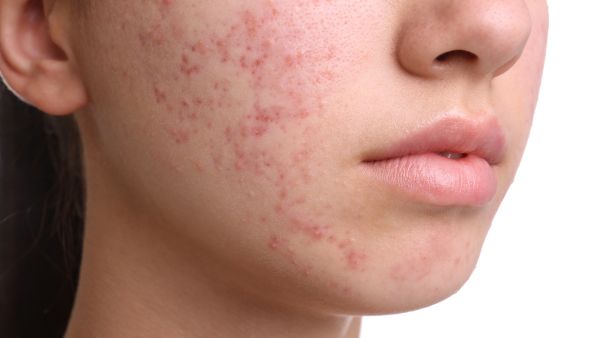Sunlight is essential for our health, providing much-needed vitamin D that helps regulate our immune system, improve mood, and strengthen bones. However, while the sun offers various benefits, excessive exposure can lead to significant skin damage over time. Unprotected exposure to the sun’s harmful ultraviolet (UV) rays can cause premature aging, dark spots, wrinkles, and even increase the risk of skin cancer. In fact, the American Academy of Dermatology reports that skin cancer is the most common form of cancer in the United States, with UV radiation as a leading cause.
Understanding how to protect your skin from sun damage is crucial to maintaining both the appearance and health of your skin. In this guide, we will explore the best practices for protecting your skin and keeping it healthy, radiant, and youthful.
1. Use Broad-Spectrum Sunscreen Every Day
The most important step in protecting your skin from sun damage is to use sunscreen every day. Sunscreen acts as a barrier between your skin and the sun’s harmful UV rays. There are two types of UV radiation: UVA and UVB. UVA rays penetrate deeply into the skin, contributing to premature aging and wrinkles, while UVB rays are responsible for sunburns and play a significant role in the development of skin cancer.
For the best protection, choose a broad-spectrum sunscreen that shields against both UVA and UVB rays. Additionally, it’s important to select a product with a Sun Protection Factor (SPF) of at least 30. This level of SPF blocks about 97% of UVB rays. For those spending extended periods outdoors, higher SPF levels and reapplication every two hours, or after swimming or sweating, is highly recommended.
Tips for Sunscreen Use:
- Apply sunscreen to all exposed skin, not just your face. Don’t forget areas like your neck, ears, hands, and feet.
- Use about a shot glass-sized amount (one ounce) for full-body coverage.
- Make sunscreen part of your morning skincare routine, even on cloudy days, as UV rays can penetrate through clouds.
- Consider using a lip balm with SPF to protect your lips from sun damage.
2. Seek Shade During Peak Sun Hours
UV rays are strongest between 10 a.m. and 4 p.m., making this time frame the most hazardous for sun exposure. Whenever possible, seek shade during these peak hours to limit your direct exposure to harmful rays. Whether you’re spending time at the beach, park, or just running errands, being mindful of when the sun’s rays are most intense can make a significant difference in preventing sun damage.
If you cannot avoid being outside during these hours, try to limit the amount of time you spend in direct sunlight, and take frequent breaks in the shade to give your skin a rest. Opting for indoor activities during this time of day can be a good alternative as well.
3. Wear Protective Clothing and Accessories
Another effective way to guard your skin from sun damage is to cover up with protective clothing. Wearing long-sleeved shirts, long pants, and wide-brimmed hats can provide a physical barrier against harmful UV rays, particularly for areas that are often exposed, like your shoulders and face. Today, many brands offer UPF (Ultraviolet Protection Factor) clothing designed to block UV rays. These fabrics are lightweight and breathable, making them comfortable even on hot days while providing the sun protection your skin needs.
Essential Protective Accessories:
- Wide-brimmed hats: Choose a hat that offers coverage for your face, neck, and ears.
- Sunglasses with UV protection: Look for sunglasses that block 100% of UVA and UVB rays to protect your eyes and the delicate skin around them from damage.
- Light, tightly woven fabrics: These can offer more protection than loose, open-weave fabrics like cotton.
While covering up is highly effective, it’s still important to apply sunscreen to any exposed areas, such as the hands and feet.
4. Stay Hydrated for Healthy Skin
Hydration is crucial for maintaining healthy, resilient skin. Sun exposure can cause dehydration, leading to dry, irritated skin that is more prone to damage. Drinking plenty of water throughout the day can help your skin stay hydrated and reduce the harmful effects of the sun.
Hydrated skin is also better at repairing itself after sun exposure, which means that keeping your body well-hydrated can help your skin recover faster if you do get sunburned. Try to aim for at least eight glasses of water per day, and increase your intake during hot, sunny weather or when you’re spending time outdoors.
5. Be Mindful of Reflective Surfaces
When spending time near reflective surfaces such as water, sand, snow, or glass, your skin is exposed to more UV radiation than you might think. These surfaces reflect UV rays, amplifying your exposure to sunlight. For instance, spending time at the beach or by a pool can lead to increased exposure due to reflection off the water and sand, while snowy environments can reflect up to 80% of UV radiation. Even indoors, light reflecting through windows can expose you to damaging rays.
To combat this, make sure to:
- Wear sunscreen even when spending time in shaded areas near reflective surfaces.
- Use physical barriers such as hats or umbrellas.
- Reapply sunscreen more frequently when around water, sand, or snow.
6. Avoid Tanning Beds
While the idea of achieving a golden tan may seem appealing, tanning beds are not a safe alternative to sunbathing. Tanning beds emit concentrated doses of UVA and UVB rays, which significantly increase the risk of skin cancer. In fact, using a tanning bed before the age of 35 increases your risk of developing melanoma by 75%. Additionally, frequent use of tanning beds can lead to premature aging, causing wrinkles and loss of skin elasticity.
If you desire a sun-kissed glow, consider using sunless tanning products like self-tanners or spray tans. These products provide the desired tan without subjecting your skin to harmful UV rays.
7. Practice After-Sun Care
Even with the best sun protection strategies, occasional overexposure happens. To help your skin recover and minimize damage, it’s important to practice proper after-sun care.
If you do get sunburned, take action immediately:
- Cool the skin with cold compresses or a cool bath to reduce inflammation.
- Apply aloe vera gel or moisturizers containing hydrating ingredients like glycerin or hyaluronic acid to soothe the skin and lock in moisture.
- Drink extra water to rehydrate your body.
- Avoid further sun exposure until your skin has fully healed.
Additionally, consider using products with antioxidants like vitamin C or E in your skincare routine. Antioxidants help neutralize free radicals caused by UV exposure, supporting skin repair and preventing long-term damage.
8. Regular Skin Examinations
Protecting your skin from sun damage doesn’t stop at prevention; it also requires vigilance. Regular skin checks are crucial in catching early signs of skin cancer or other sun-related issues. Keep an eye out for any changes in your skin, such as new moles, growths, or changes in existing spots. The “ABCDE” rule can help you identify suspicious moles that could be early signs of melanoma:
- Asymmetry
- Border irregularity
- Color variation
- Diameter larger than 6mm
- Evolving size, shape, or color
If you notice any changes, schedule an appointment with a dermatologist immediately. Early detection is key to effective treatment.
Conclusion
Sun protection is essential for maintaining healthy, youthful skin. By incorporating broad-spectrum sunscreen into your daily routine, wearing protective clothing, seeking shade, and staying hydrated, you can minimize the damaging effects of UV radiation. With proper precautions, you can enjoy the benefits of the sun while keeping your skin safe, healthy, and radiant for years to come. Remember, protecting your skin today is an investment in its long-term health and beauty.

